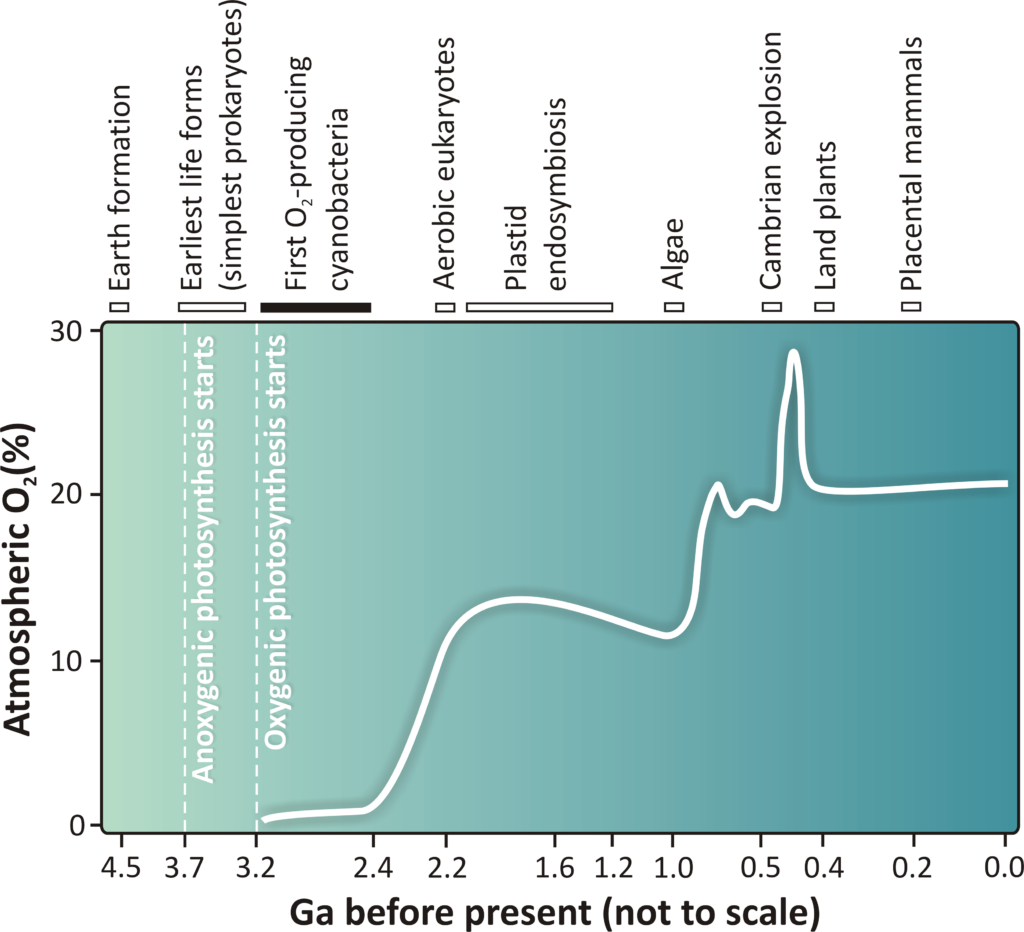Featuring image: Oxygen was not always present in Earth’s atmosphere, but stated to accumulate only around 3.5 billion years ago. Pixabay, Public Domain (CC0)
Paper: Delayed and variable late Archaean atmospheric oxidation due to high collision rates on Earth
Authors: S. Marchi, N. Drabon, T. Schulz, L. Schaefer, D. Nesvorny, W. F. Bottke, C. Koeberl and T. Lyons
Take a deep breath. Your lungs fill with air and vital oxygen. Not only you, but all higher life depends on oxygen. In the Archean aeon, which lasted from 4 to 2.5 billion years before present, Earth’s atmosphere contained no oxygen. How did oxygen accumulate in the atmosphere? A team of researchers discovered that the evolution of our atmosphere was strongly influenced by impacts of large meteorites when our planet was still young.

During its history, Earth underwent radical changes. One of the biggest and maybe the most important for the evolution of modern life as we know it, was the Great Oxidation Event (GOE) 2.5 billion years ago. It marks the time of a fundamental change in Earth’s atmospheric composition when free oxygen became available to the surface for the first time. There are different lines of evidence for this event. One of the most iconic is the sudden global occurrence of beautiful iron structures, called banded iron formations. They formed when the presence of oxygen led to the oxidation and sedimentation of iron in the oceans. However, there are many signs, that the oxidation of the atmosphere was not a smooth event, but predated by a complicate back and forth between anoxic and oxic conditions.

What was the reason for the strong oxygen fluctuations in the late Archean? Marchi and his co-workers showed how meteorite impacts could have effected the evolution of the atmosphere. Meteoritic material is strongly reduced. When put into an oxygen-containing atmosphere, it weathers and consumes oxygen. Thus, it is important to trace back how much material was delivered to Earth during its accretion. To do so, the team of Marchi used two sources of information: The first one is the crater record of the Moon’s surface. The absence of tectonics and an atmosphere preserved the surface from weathering and allows us to get a decent idea of Moon’s impact history. The second source are old sediments on Earth, which contain a lot of tiny glass spherules. These spherules form when a big piece of rock hits the ground. The impact energy is high enough to partly melt the surface and the impactor. The melt then rapidly cools down and forms glassy spheres. At least 16 of such layers are known to us. The scientists were able to estimate the size of the meteorites which created the melt from the thickness of the layers and the size distribution of the spherules. With the aid of astrophysical models on meteorite formation, they inferred how much meteoritic material landed on Earth during the Archean. They compared the amount of oxygen, that would be needed to oxidise the freshly accreted material with the amount of oxygen that was produced by different geological and biological processes, like cyanobacteria. Their estimations show that there was probably no oxygen in the atmosphere prior to 3 billion before present. Furthermore, impacts of large meteorites could have delivered enough material at once to consume all the already accumulated oxygen at the end of the Archean. This could help to explain the repeated changes from periods of oxygen-containing and oxygen-fee conditions.
It is astonishing how our planet changed during its 4.5 billion years of existence and how processes up in the sky effect our life here on the surface of Earth. The past of our planet is still covered in mystery and many questions remain unanswered, but slowly we start to understand Earth’s history and with that also our own.
License:
‘How did giant impacts influence our atmosphere?’ by Max Winkler is licensed under a Creative Commons Attribution-ShareAlike 4.0 International License.

